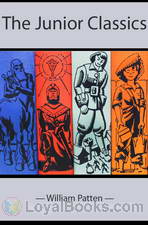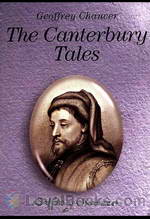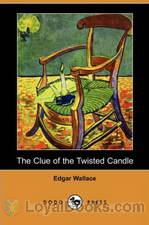|
Books Should Be Free Loyal Books Free Public Domain Audiobooks & eBook Downloads |
|
|
Books Should Be Free Loyal Books Free Public Domain Audiobooks & eBook Downloads |
|
Top Authors |
|---|
|
Book type:
Sort by:
|
By: Fyodor Dostoyevsky (1821-1881) | |
|---|---|
 White Nights & Other Stories
White Nights & Other Stories
White Nights and Other Stories by Fyodor Dostoyevsky is a compilation published in 1918 by The MacMillan Company, NY (USA) and Heinemann (UK). It contains these 7 works:- White Nights- Notes from the Underground- A Faint Heart- A Christmas Tree and a Wedding- Polzunkov- A Little Hero- Mr. Prohartchin | |
 Possessed
Possessed
| |
 The Grand Inquisitor
The Grand Inquisitor
| |
By: Edward M. Forster (1879-1970) | |
|---|---|
 Howards End
Howards End
It's sad, but true to say that today Edward Morgan Forster's works are known more from their film and television adaptations rather than from their original novels. Yet, these adaptations have spurred many a fascinated viewer into going back to the library and finding the book that the film or miniseries was based on and this is ultimately the power of Forster's literary appeal. Howard's End was published in 1910 and it marked Forster's first taste of critical and commercial success. He had published three other novels earlier, Where Angels Fear To Tread (1905), The Longest Journey (1907) and A Room With a View (1908) but none of them had been received with so much acclaim... | |
 A Room With a View
A Room With a View
A Room With a View opens with Two Englishwomen touring Europe. The older one is poor, bossy, old fashioned and a great upholder of what is “proper.” The younger one is less certain of herself, but holds within her the makings of a passionate, emotional and independent woman. In Florence they are allotted a room overlooking a dull courtyard, whereas they had specifically asked for a “view.” A fellow guest offers them his own rooms which offer wonderful vistas of the Arno. The older woman instead of appreciating his courtesy, sees this as a breach of propriety... | |
 Where Angels Fear to Tread
Where Angels Fear to Tread
On a journey to Tuscany with her young friend and traveling companion Caroline Abbott, widowed Lilia Herriton falls in love with both Italy and a handsome Italian much younger than herself, and decides to stay. Furious, her dead husband’s family send Lilia’s brother-in-law to Italy to prevent a misalliance, but he arrives too late. Lilia marries the Italian and in due course becomes pregnant again. When she dies giving birth to her child, the Herritons consider it both their right and their duty to travel to Monteriano to obtain custody of the infant so that he can be raised as an Englishman. | |
 The Longest Journey
The Longest Journey
Frederick Elliot is a student at early 20th century Cambridge, a university that seems like paradise to him, amongst bright if cynical companions, when he receives a visit from two friends, an engaged young woman, Agnes Pembroke, and her older brother, Herbert. The Pembrokes are Rickie’s only friends from home. An orphan who grew up living with cousins, he was sent to a public (boarding) school where he was shunned and bullied because of his lame foot, an inherited weakness, and frail body. Agnes, as it happens, is engaged to Gerald, now in the army, who was one of the sturdy youths who bullied Rickie at school... | |
By: William Patten (1868-1946) | |
|---|---|
 The Junior Classics
The Junior Classics
The purpose of The Junior Classics is to provide, in ten volumes containing about five thousand pages, a classified collection of tales, stories, and poems, both ancient and modern, suitable for boys and girls of from six to sixteen years of age. | |
 Short Story Classics (American)
Short Story Classics (American)
MANUAL OF SURGERY, OXFORD MEDICAL PUBLICATIONSBY ALEXIS THOMSON, F.R.C.S.Ed.PREFACE TO SIXTH EDITION Much has happened since this Manual was last revised, and many surgical lessons have been learned in the hard school of war. Some may yet have to be unlearned, and others have but little bearing on the problems presented to the civilian surgeon. Save in its broadest principles, the surgery of warfare is a thing apart from the general surgery of civil life, and the exhaustive literature now available on every aspect of it makes it unnecessary that it should receive detailed consideration in a manual for students... | |
By: Various | |
|---|---|
 International Short Stories Volume 1: American Stories
International Short Stories Volume 1: American Stories
The first volume of a 3 volume anthology, this work focuses on American short stories and draws from Nathaniel Hawthorne, Anna Katherine Greene, James Fenimore Cooper, Edgar Allan Poe and many other favorites. Topics range from historical to science fiction, melodramatic to philosophic. | |
By: Niccolò Machiavelli (1469-1527) | |
|---|---|
 The Prince
The Prince
Machiavelli has created a ruthless guide on how to rule the country in his volume "The Prince". The book is dedicated to Lorenzo De Medici, the ruler of Florence. The author explains in simple language about the nature of great men and the characters of the government. The first chapter gives an outline of the book discussing various styles of ruling as a prince, character traits that a ruler should have and the political situation of Italy in the 16th century. The book is composed of 26 chapters which fall into four major sections... | |
 History of Florence and of the Affairs of Italy
History of Florence and of the Affairs of Italy
History of Florence and of the Affairs of Italy is an historical account by Niccolò Machiavelli. Toward the end of 1520, the Cardinal Giulio of Medici, later Pope Clement VII, offered Machiavelli the appointment to write a history of Florence. Although Machiavelli was reluctant to accept, accepting was his only way to regain the good graces of the Medici who had regained power and were in a position to offer him employment and protection. Doing the history also provided a way for Machiavelli’s views to become the “official” history of Florentine and Italian affairs. Once completed, the work was presented officially to Giulio, now Pope, in May of 1526. | |
By: James Allen (1864-1912) | |
|---|---|
 As a Man Thinketh
As a Man Thinketh
“A man is literally what he thinks, his character being the complete sum of all his thoughts,” is one of the quotes from James Allen's classic self help books, As a Man Thinketh. Published in 1902, it provides many more such insightful concepts on the power of thought and its effect on a human being's personality and behavior. This volume is more of a literary essay than a complete book and its title is based on a Biblical proverb, “As a man thinketh in his heart, so is he.” Taking this piece of ancient wisdom further, James Allen explores the far-reaching effects of the inner workings of a person's mind and motivation... | |
 The Way of Peace
The Way of Peace
The Way of Peace is your guide to the power of meditation; self and truth; the acquirement of spiritual power; the realization of selfless love; entering into the infinite; saints, sages, and saviors; the law of service; and the realization of perfect peace. | |
By: Geoffrey Chaucer (c. 1343-1400) | |
|---|---|
 The Canterbury Tales
The Canterbury Tales
Anyone who has ever been on a package tour with a group of strangers who soon become friends, and passed time swapping stories with them, would instantly identify with this timeless classic of English literature. The Canterbury Tales by Geoffrey Chaucer recounts twenty different stories recounted by a diverse group of pilgrims who gather at The Tabard Inn in Southwark, near London, before setting out for the shrine of Thomas Becket in Canterbury. The Host of the inn proposes that they entertain themselves by telling stories along the route and the one who tells the best tale would win a prize – a meal at Bailey's tavern, sponsored by the losers... | |
By: Walt Whitman (1819-1892) | |
|---|---|
 Leaves of Grass
Leaves of Grass
Nearly 160 years after it was first published, Walt Whitman's Leaves of Grass continues to inspire, enthrall and educate generations of readers. This collection of poems serves as a vehicle for Whitman's philosophy, ideals, love of nature and mystical musings and it subsequently became one of the corner stones of American literature. Whitman was inspired to write Leaves of Grass based on Ralph Waldo Emerson's clarion call for a truly American poet who would tell of its glories, virtues and vices... | |
 Specimen Days
Specimen Days
Specimen Days is essentially the great American poet Walt Whitman’s scrap book. It documents most of his life’s adventures, espeically his experience serving as a nurse during the Civil War and travelling around America. | |
 The Wound Dresser
The Wound Dresser
The Wound Dresser is a series of letters written from the hospitals in Washington by Walt Whitman during the War of the Rebellion to The New York Times, the Brooklyn Eagle and his mother, edited by Richard Maurice Burke, M.D., one of Whitman's literary executors. | |
 Poems By Walt Whitman
Poems By Walt Whitman
| |
 Drum-Taps
Drum-Taps
Drum Taps is the next collection of poems published by Walt Whitman after his famous Leaves of Grass. This collection is a direct response to Whitman's personal observations of the Civil War, many of which come from his volunteer efforts in wartime hospitals. Despite the miseries of war described, Whitman's poems in Drum Taps assert a steady patriotism in favor of Lincoln's war effort. Interestingly, the 1915 edition used for this reading includes an introduction from the Times Literary Supplement which draws analogies between the Civil War and the current throes of World War I, enlisting Whitman posthumously as a supporter of the Allied campaign against Germany. | |
 Song of the Broad-Axe - stanza 4
Song of the Broad-Axe - stanza 4
This Weekly Poem is an excerpt from Song of the Broad-axe (4th Stanza) by Walt Whitman, who was an American poet, essayist and journalist. A humanist, he was a part of the transition between transcendentalism and realism, incorporating both views in his works. Whitman is among the most influential poets in the American canon, often called the father of free verse. | |
By: Edgar Wallace (1875-1932) | |
|---|---|
 The Angel of Terror
The Angel of Terror
Conventional ideas of beauty are typically associate it with goodness and kindness. However, appearances can be deceptive. Jean Briggerland is exquisitely lovely, but few know that this ethereal, angelic facade hides an utterly immoral and cruel heart within. Her insatiable lust for power and money claim many an innocent victim till one day, a lawyer named Jack Glover is called upon to defend his best friend and cousin, James Meredith in a murder trial. Meredith is alleged to have murdered a young man in a fit of jealous rage because he objected to the man's friendship with Meredith's lovely fiancée... | |
 The Clue of the Twisted Candle
The Clue of the Twisted Candle
This story describes a house in Cadogan Square, London, in which extensive alterations have been done by the Greek owner. One of the rooms is built like a safe. The walls floor and roof are made of almost indestructible reinforced concrete. The only door to the room can only be opened or closed by the owner. The single window is unreachable and there is a steel safe built into the outer wall which is in plain sight of the local policeman who patrols the street every night. Yet it is in this barred and shuttered room that the Greek is found brutally murdered... | |
 The Daffodil Mystery
The Daffodil Mystery
Set in England at the turn of the 20th century, Wallace’s crime novel The Daffodil Mystery follows the mysterious circumstances under which shop owner Lyne has been murdered. Accordingly, it is up to detective Jack Tarling and his trusted Chinese assistant to solve the case and reach an appropriate and just resolution. Moreover, the happenings within the novel are intensified by the colorful set of characters, which are marked by their plausible façade and contribute to the novel’s appeal... | |
 The Secret House
The Secret House
A stranger and foreigner arrives at the offices of a small publication in London only to be faced by the “editor” whose face is completely swathed in a veil. Nothing is as it seems, and it quickly becomes evident that both are bent on more than lively gossip about the elite. Blackmail and opportunism is the order of the day. When two men are found shot to death outside the door of Mr. Farrington the millionaire who just happens to live a few doors from T. B. Smith, the head of the secret police, the connections to blackmail are not long in coming. Were these men shot by the blackmailer? Who is actually what he seems to be? | |
 The Green Rust
The Green Rust
Edgar Wallace, perhaps best known for creating King Kong, wrote dozens of novels. The Green Rust, his twelfth crime novel, is one of three books he published in 1919. It begins at the English home of the severely ill American millionaire, John Millinborn. With him are his best friend, Kitson, and a local doctor, the Dutch (or is he?) van Heerden. He is murdered in the first chapter, having just left his fortune to his niece, Oliva, whom he has never met. Before he dies, he asks Kitson to find and watch over Oliva. (Introduction by Kirsten Wever) | |
 The Man Who Knew
The Man Who Knew
| |
 Sanders of the River
Sanders of the River
| |
 Bones Being Further Adventures in Mr. Commissioner Sanders' Country
Bones Being Further Adventures in Mr. Commissioner Sanders' Country
| |
 Bones in London
Bones in London
| |
 The Keepers of the King's Peace
The Keepers of the King's Peace
| |
 Tam o' the Scoots
Tam o' the Scoots
| |